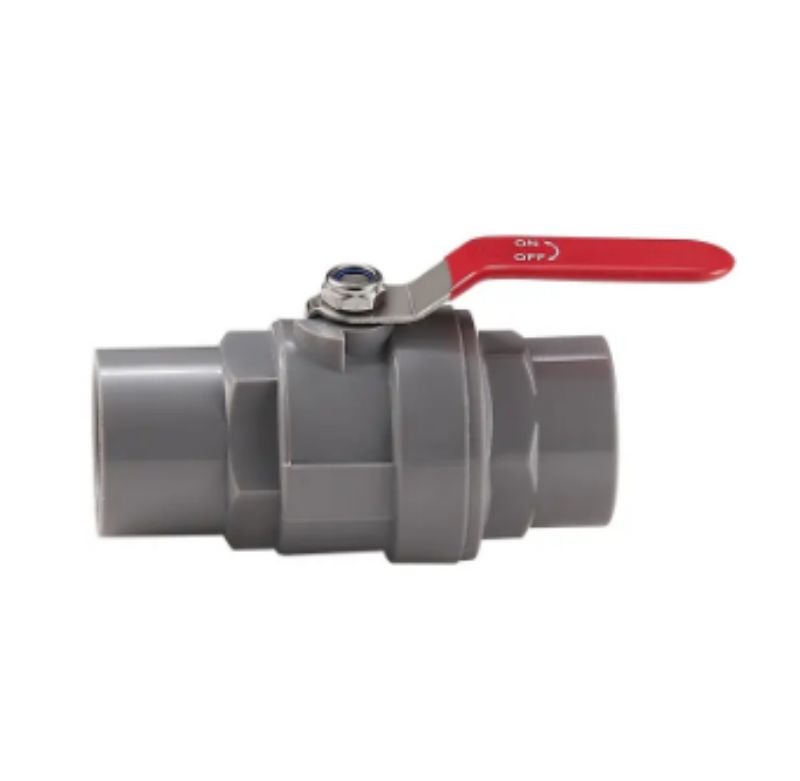PVC two pieces ball valves with stainless steel handles are an essential component of plumbing systems in commercial and residential buildings. They provide a convenient and reliable means of controlling the flow of liquids and gases in piping systems, and are available in a range of sizes and pressure ratings to meet specific applications needs. The design and construction of these valves are predicated on sound engineering principles, ensuring durability and longevity without compromising on performance.
In this article, we will delve deeper into the materials used in the construction of PVC two pieces ball valves with stainless steel handles, exploring their properties and benefits. We will also review the manufacturing process involved in bringing these valves to fruition, ensuring a high-quality end product for our readers to understand and appreciate.

Materials Used
PVC (Polyvinyl Chloride): The main material used in the construction of the valve body is PVC, a synthetic resin that provides excellent chemical resistance and mechanical strength. Its use is optimal for residential and commercial applications where the valve will be exposed to a range of fluids and solvents. PVC is also lightweight, easy to install, and has good insulation properties, making it an excellent choice for plumbing systems.
Stainless Steel: The handle of the valve is made of stainless steel, a highly corrosion-resistant metal that is also aesthetically pleasing. The use of stainless steel ensures that the handle will maintain its appearance and function over the lifetime of the valve, even in adverse conditions.
Seals and Gaskets: The valve also contains various seals and gaskets made from rubber and other elastomers that provide leak-tight sealing when the valve is closed. These materials are resistant to a wide range of chemicals and temperatures, enhancing the overall performance and durability of the valve.
Manufacturing Process
The manufacturing process begins with the selection of raw materials, including PVC resin, stainless steel, and elastomeric materials. The next step is the injection molding process, where the PVC resin is heated and forced into the mold under high pressure to form the valve body. The stainless steel handle is then affixed to the valve body, typically using threaded fasteners or welding processes. The seals and gaskets are then inserted into the valve assembly during this time as well.
Following assembly, the valves are sent for inspection where they undergo a series of leak tests and pressure ratings to ensure they comply with industry standards and performance specifications. The final step is packaging and distribution, where the valves are packaged to protect them from damage during transportation and storage, ready for installation into plumbing systems.
In conclusion, PVC two pieces ball valves with stainless steel handles are constructed using a combination of materials that provide chemical resistance, mechanical strength, and durability over time. The valves are designed for ease of installation and operation, while meeting specific performance requirements in a range of applications. Understanding the materials used in their construction and the care taken during their manufacturing process lays the groundwork for selecting and relying on these valves in various plumbing systems.
Post time: Oct-18-2023

